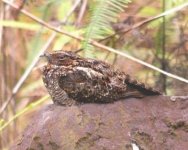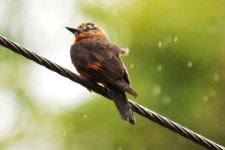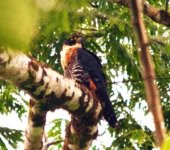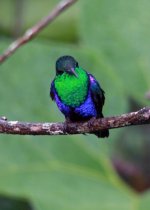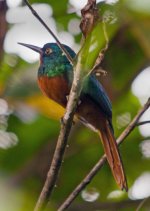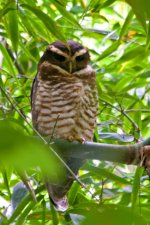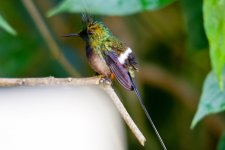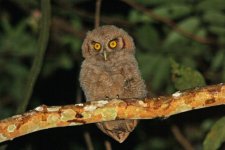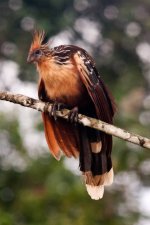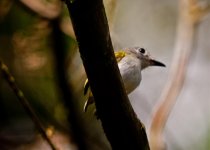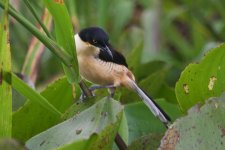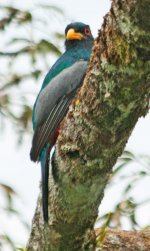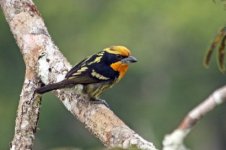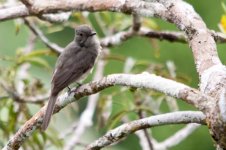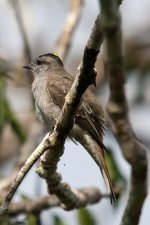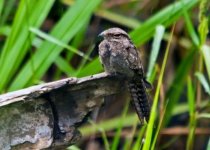sungrebe
Well-known member
Went birding in Ecuador for the third time in August to see the eastern half of the country; I had previously birded the western slope/Choco area and the high elevation paramo as well as the Galapagos, and wanted to complete the width of the country.
I was not disappointed; in 10 days we saw 430 birds and I added well over 100 life birds to my list.
Following is a recap of our adventures from the mountains to the lowlands!
I arranged my excursion through Mindo Bird Tours /www.mindobirds.com.ec/ , a company I had used for my previous trips. I arranged for a guide just for myself, and again had the pleasure of birding with Dusan Brinkhuisen, the primary guide for the company and a friend at this point. His skills are without peer, and his enthusiasm makes any birding time an adventure.
Dusan and our driver Nestor picked me up at Quito's new airport at 1830 on Tuesday, 20 August after my flight from New York, and we made the 4 hour drive to the town of Archidona where we stopped at the Orchid’s Paradise inn for an overnight stay before travelling down the eastern slope of the Andes. Our plan was to bird the subtropical and foothill elevations of the Andes’ eastern slope. The avifauna is markedly different in the east due to the natural barrier formed by the Andes that prevents many species from crossing to the opposite slope.
Early morning birding before breakfast was a hit immediately, with looks at CHESTNUT-THROATED SPINETAIL, (a rare ovenbird of the eastern slope listed as Near-Threatened) and an unexpected ORANGE-BREASTED FALCON perched inconspicuously in a high tree. These two hard to see birds were a special start to a ten day birding extravaganza.
After eats, we headed down the Loreto Road to bird this hotspot on our way to Wildsumaco Lodge. We got great views and photos of a family of BLACKISH NIGHTJARS on a day roost surprisingly close to the road; a STRIOLATED PUFFBIRD made an appearance, as did the tyrannids CLIFF FLYCATCHER and WHITE-FRONTED TYRANNULET. An OLIVACEOUS SISKIN added to my lifer list.
Next entry : WILDSUMACO LODGE !
I was not disappointed; in 10 days we saw 430 birds and I added well over 100 life birds to my list.
Following is a recap of our adventures from the mountains to the lowlands!
I arranged my excursion through Mindo Bird Tours /www.mindobirds.com.ec/ , a company I had used for my previous trips. I arranged for a guide just for myself, and again had the pleasure of birding with Dusan Brinkhuisen, the primary guide for the company and a friend at this point. His skills are without peer, and his enthusiasm makes any birding time an adventure.
Dusan and our driver Nestor picked me up at Quito's new airport at 1830 on Tuesday, 20 August after my flight from New York, and we made the 4 hour drive to the town of Archidona where we stopped at the Orchid’s Paradise inn for an overnight stay before travelling down the eastern slope of the Andes. Our plan was to bird the subtropical and foothill elevations of the Andes’ eastern slope. The avifauna is markedly different in the east due to the natural barrier formed by the Andes that prevents many species from crossing to the opposite slope.
Early morning birding before breakfast was a hit immediately, with looks at CHESTNUT-THROATED SPINETAIL, (a rare ovenbird of the eastern slope listed as Near-Threatened) and an unexpected ORANGE-BREASTED FALCON perched inconspicuously in a high tree. These two hard to see birds were a special start to a ten day birding extravaganza.
After eats, we headed down the Loreto Road to bird this hotspot on our way to Wildsumaco Lodge. We got great views and photos of a family of BLACKISH NIGHTJARS on a day roost surprisingly close to the road; a STRIOLATED PUFFBIRD made an appearance, as did the tyrannids CLIFF FLYCATCHER and WHITE-FRONTED TYRANNULET. An OLIVACEOUS SISKIN added to my lifer list.
Next entry : WILDSUMACO LODGE !




